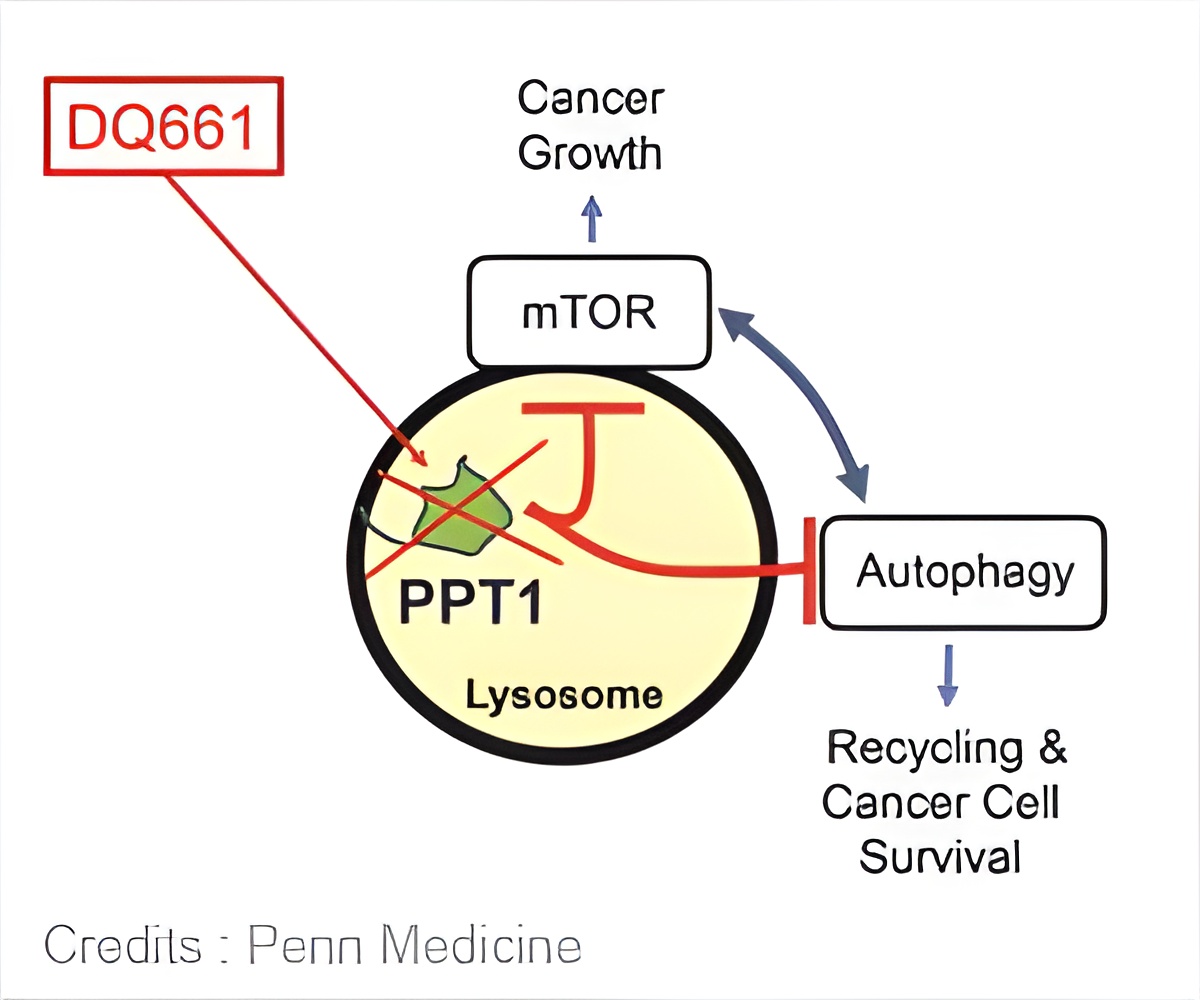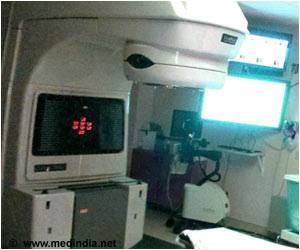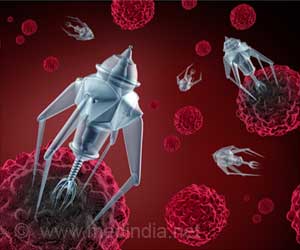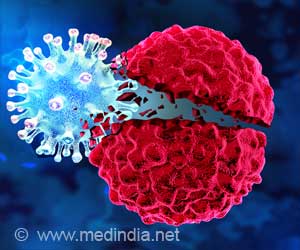A new approach to fight cancer such as melanoma, pancreatic and colorectal cancer blocks the key growth enzyme called PPT1 as well as the process that causes resistance to current treatments.

‘A new approach to fight cancer such as melanoma, pancreatic and colorectal cancer blocks the key growth enzyme called PPT1 as well as the process that causes resistance to current treatments. The drug being developed for this purpose is called DQ661.’





The target is an enzyme called PPT1, which controls both the mechanistic target of rapamycin (mTOR), a major regulator of growth in cancer cells, as well as a process called autophagy, a built-in resistance mechanism which allows cells to survive when under attack by breaking down unneeded parts and recycling them to stay alive. Numerous drugs that target mTOR are approved by for cancer patients by the U.S. Food and Drug Administration, but targeting mTOR with these currently available inhibitors turns on autophagy, thus making the tumor resistant.
"What we learned in this study is that mTOR and autophagy aren't opposed to each other as previously thought. They're actually complementary, because autophagy provides the nutrients that allow mTOR to direct growth, while mTOR shuts off autophagy when the nutrients aren't needed," said co-senior author Ravi K. Amaravadi, MD, an associate professor of Hematology Oncology in the Perelman School of Medicine at the University of Pennsylvania and a member of Penn's Abramson Cancer Center.
That yin and yang relationship takes place in a part of the cell called the lysosome. Previously, it has taken two drugs to stop both processes, but by focusing on drugs that hone in on the lysosome more efficiently, researchers have found one drug that can block both.
"We know that autophagy is an important mechanism for cancer resistance, but there are very few ways to block it. This is the first targeted approach to inhibiting the lysosome in order to block autophagy," Amaravadi said.
Advertisement
"It turns out that both what is linking them and how they are linked are crucial to why this works," said the study's co-senior author Jeffrey D. Winkler, the Merriam Professor of Chemistry in the School of Arts and Sciences at the University of Pennsylvania.
Advertisement
The lead authors of the study were Vito W. Rebecca, PhD, a postdoctoral researcher in Amaravadi's lab, Michael C. Nicastri, a graduate student in Winkler's lab, and Noel McLaughlin, PhD, who was a postdoctoral researcher in Winkler's lab at the time of the research. Winkler says the ability to work across multiple disciplines is what led to the discovery.
"As (Amaravadi) and his team tried to solve the autophagy problem, they came to us for help in developing a better form of quinacrine, which is what we have in DQ661," Winkler said.
While the approach has clear clinical benefits, researchers still need to develop these compounds into drugs that are suitable for human patients, which will be the focus of their efforts moving forward.
Source-Eurekalert















